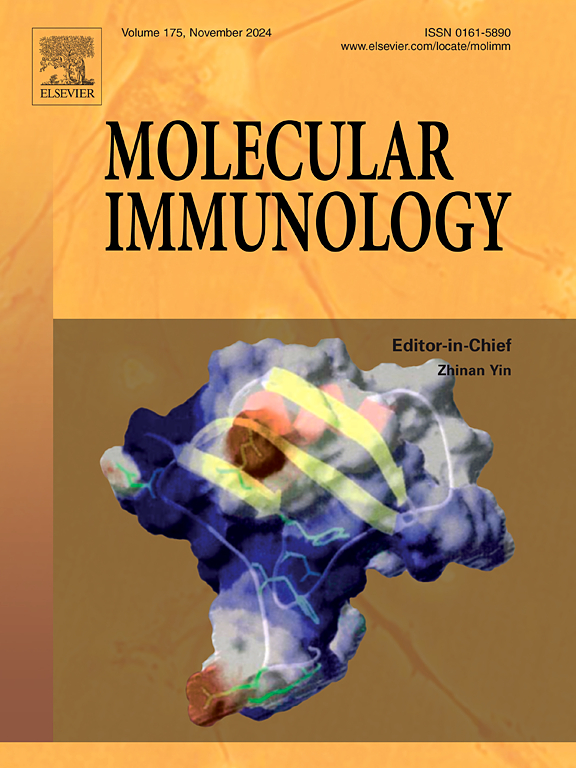多诺瓦利什曼烯醇化酶和三糖磷酸酶异构酶衍生的Th1刺激表位对实验性内脏利什曼病的免疫治疗效果
IF 3.2
3区 医学
Q2 BIOCHEMISTRY & MOLECULAR BIOLOGY
引用次数: 0
摘要
内脏利什曼病是一种致命的全身性疾病,鉴于无症状宿主,不能仅靠药物控制,必须包括调节地方性接触者免疫反应的替代方案。我们之前的研究已经通过蛋白质组学方法获得了潜在的免疫调节蛋白,它们的肽显示出显著的免疫调节和预防作用。目前的研究旨在评估导联肽(P10, P14和P15)及其与BCG作为佐剂的组合的免疫治疗潜力。结果表明,P10 + 14和P10 + P15是最有潜力的治疗肽组合,因为这两种组合可减少寄生虫负担>; 65 %,引起显著的细胞反应。IFN-γ、TNF-α和IL-12水平升高,TGF-β表达降低,提示免疫反应偏向Th1型。这些结果进一步得到了强DTH和淋巴增生反应的支持,表明肽组合的治疗潜力和消除黑热病计划的可能性。本文章由计算机程序翻译,如有差异,请以英文原文为准。
Immunotherapeutic efficacy of Th1 stimulatory epitopes derived from Leishmania donovani enolase and triose phosphatase isomerase in experimental visceral leishmaniasis
Visceral leishmaniasis is a lethal systemic disease which cannot be controlled by drugs alone given asymptomatic reservoirs and must include alternatives to modulate immune responses of the endemic contacts. Our previous studies have yielded potential immunomodulatory proteins by proteomic approach and their peptides showed significant immunomodulation and prophylactic efficacies. The current study has been intended to evaluate immunotherapeutic potential of the lead peptides (P10, P14 and P15) and their combinations with BCG as adjuvant. Results indicated P10 + 14 as well as P10 + P15 to be the most potential therapeutic peptides cocktails as both these combinations reduced parasite burden by > 65 % eliciting remarkable cellular response. High level of IFN-γ, TNF-α and IL-12 with decreased TGF-β expression suggested skewing of immune response towards Th1 type. These results were further supported by strong DTH and lymphoproliferative responses indicating therapeutic potential of the peptide combinations and possibilities in Kala-azar elimination program.
求助全文
通过发布文献求助,成功后即可免费获取论文全文。
去求助
来源期刊

Molecular immunology
医学-免疫学
CiteScore
6.90
自引率
2.80%
发文量
324
审稿时长
50 days
期刊介绍:
Molecular Immunology publishes original articles, reviews and commentaries on all areas of immunology, with a particular focus on description of cellular, biochemical or genetic mechanisms underlying immunological phenomena. Studies on all model organisms, from invertebrates to humans, are suitable. Examples include, but are not restricted to:
Infection, autoimmunity, transplantation, immunodeficiencies, inflammation and tumor immunology
Mechanisms of induction, regulation and termination of innate and adaptive immunity
Intercellular communication, cooperation and regulation
Intracellular mechanisms of immunity (endocytosis, protein trafficking, pathogen recognition, antigen presentation, etc)
Mechanisms of action of the cells and molecules of the immune system
Structural analysis
Development of the immune system
Comparative immunology and evolution of the immune system
"Omics" studies and bioinformatics
Vaccines, biotechnology and therapeutic manipulation of the immune system (therapeutic antibodies, cytokines, cellular therapies, etc)
Technical developments.
 求助内容:
求助内容: 应助结果提醒方式:
应助结果提醒方式:


